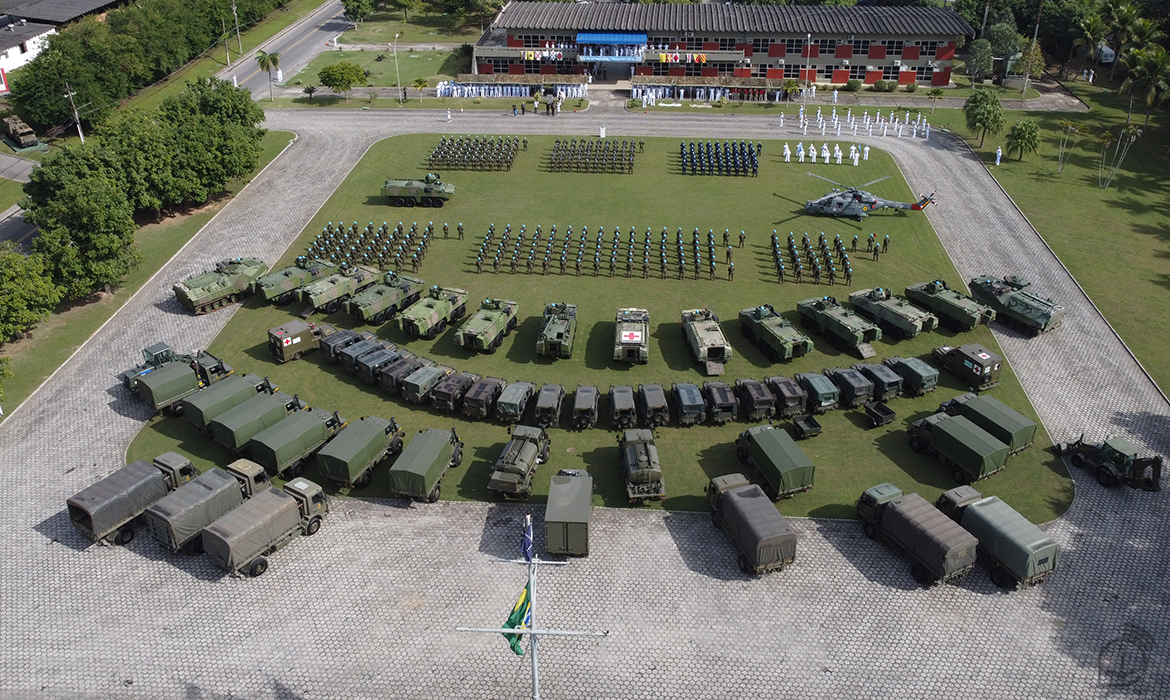Capitão-Tenente (RM2-T) Laís Dornelas de Araujo Itagyba – Rio de Janeiro, RJ
The International Day of Peacekeepers is celebrated every year on May 29th. The date was established by the UN to honor civilians and military personnel of today and yesterday who fight or have fought for world peace. In allusion to this day, the Brazilian Navy (MB) held, on June 13, at the Naval Complex on Ilha do Governador, in Rio de Janeiro, a military ceremony presided over by the Commander of Naval Operations, Fleet Admiral Marcos Sampaio Olsen.
In his remarks during the event, Admiral Olsen congratulated the military personnel present there and highlighted the Navy’s participation in the missions. “On this United Nations International Day of Peacekeepers, I congratulate the members of the MB who, in the past and present, have marked a high degree of readiness. At the same time, I urge them to continue with honor, professionalism and belief, ensuring the country the means of power necessary to mitigate conflict and human suffering.
The ceremony was attended by military personnel from the Fleet Command in Chief (ComemCh), from the Fleet Marine Force Command (ComFFE), from the Admiral Sylvio de Camargo Training Center (CIASC), and from the Marine Corps Rapid Reaction Peace Force Operational Group (GptOpFuzNav-OpPaz QRF), the latter certified in April of this year by the UN as level 3 of readiness for Peace Operations, the highest operational level for that Organization, and currently the only one in the world.
Brazil’s History in Peace Missions

The Brazilian Armed Forces have been present, in the last 74 years, in 60 peacekeeping missions, sending more than 59 thousand soldiers. Among the missions coordinated by Brazil are the United Nations Mission for the Stabilization of Haiti, known as MINUSTAH, which lasted 13 years, and the Maritime Task Force of the United Nations Interim Force in Lebanon (FTM-UNIFIL), which counted on the continuous participation of ships, aircraft, and military personnel from other nations in the inspection of approximately 14 thousand vessels, with the objective of preventing illegal arms from entering Lebanese territory by sea.
Brazil has been an active member in observing ceasefire and peace agreements since 1933, when, represented by the MB, it accompanied the negotiation between Colombia and Peru in the War for the Leticia region, in the Colombian country.

*** Translated by DEFCONPress Team ***
